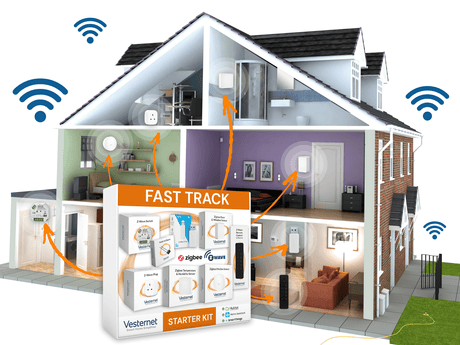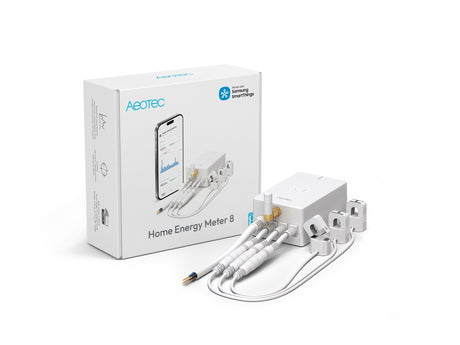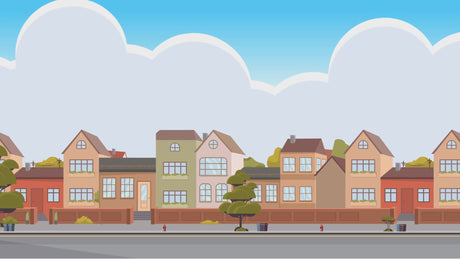Introduction
In an era where smart home technology is increasingly dependent on cloud services, building a truly offline smart home system has become both a technical challenge and a philosophical choice. While cloud-connected devices offer convenience and remote access, they come with significant trade-offs: privacy concerns, potential service disruptions, subscription fees, and the looming threat of planned obsolescence when companies decide to sunset their services.
This comprehensive guide will walk you through creating a robust, reliable smart home system that operates entirely on your local network—no internet required. We'll explore the benefits of local processing, recommend compatible hardware, provide step-by-step setup instructions, and share advanced automation techniques that don't rely on cloud services.

Why Build an Offline Smart Home?
Privacy and Data Sovereignty
When your smart home devices process data locally, your personal information stays within your home. Motion detection events, voice commands, camera footage, and sensor readings never leave your network, giving you complete control over your data. This approach eliminates concerns about third-party data collection, potential breaches, or changes in privacy policies.
Reliability and Resilience
An offline smart home continues functioning during internet outages. Your lights, security systems, and automated routines work consistently regardless of your ISP's reliability or cloud service status. This resilience is particularly valuable for critical systems like security, environmental controls, and accessibility features.
Reduced Latency
Local processing eliminates the round trip to cloud servers, resulting in near-instantaneous response times. When you flip a switch or trigger an automation, the action happens immediately—no waiting for signals to travel to distant data centers and back.
Long-Term Independence
Perhaps most importantly, an offline smart home is immune to the "service discontinued" notices that have plagued many cloud-dependent devices. Your investment remains functional for as long as the hardware itself lasts, not until a company decides to pivot its business model or shut down a service.

Choosing the Right Foundation: Local Control Hubs
The cornerstone of any offline smart home is a local control hub that can operate independently of cloud services. Here are the leading options:
Home Assistant
Home Assistant has emerged as the gold standard for local smart home control. This open-source platform offers unparalleled device compatibility, powerful automation capabilities, and a vibrant community developing integrations for virtually every smart home protocol.
Key advantages:
- Runs on inexpensive hardware like Raspberry Pi
- Supports Z-Wave, Zigbee, and many other protocols
- Extensive automation capabilities
- Active development and community support
- Completely offline operation possible
Considerations:
- Steeper learning curve than commercial solutions
- Requires some technical knowledge for advanced features
Hubitat Elevation
Hubitat offers a compelling middle ground between user-friendliness and local control. This purpose-built hub processes everything locally while providing an accessible interface for those who prefer not to tinker with code.
Key advantages:
- Purpose-built hardware with Z-Wave and Zigbee built-in
- User-friendly interface with app-based setup
- Strong automation engine
- No programming required for basic functions
Considerations:
- Less extensible than fully open-source solutions
- Limited to supported integrations
Selecting Offline-Capable Smart Devices
Not all smart devices are created equal when it comes to offline functionality. Here's what to look for in various device categories:
Lighting Control
Z-Wave and Zigbee lighting devices operate entirely on your local mesh network. Look for:
- In-wall switches and dimmers
- Plug-in modules for lamps
- Hardwired lighting controllers for multi-fixture control
Avoid: Wi-Fi smart bulbs that require cloud accounts, as these typically stop functioning without internet access.
Security and Sensors
For truly offline security:
- Z-Wave or Zigbee door/window sensors
- Motion detectors that report to your local hub
- Local network cameras with RTSP streams
- Local storage options for video recording
Recommendation: For cameras, consider systems that support direct RTSP streaming to your local NVR (Network Video Recorder) or hub, avoiding cloud-dependent solutions.
Climate Control
For heating and cooling:
- Z-Wave or Zigbee thermostats with local API access
- Smart TRVs (Thermostatic Radiator Valves) for zone control
- Temperature and humidity sensors for environmental monitoring
Avoid: Wi-Fi thermostats that require cloud accounts for basic functionality.
Voice Control and Interfaces
Voice control without the cloud is now possible through:
- Local voice assistants like Rhasspy or Home Assistant's Assist
- Offline voice recognition using edge AI devices
- Local dashboard interfaces on tablets or wall-mounted displays
Setting Up Your Offline Smart Home Hub
Let's walk through setting up Home Assistant as your offline smart home brain, as it offers the most comprehensive local control capabilities:
Hardware Requirements
For a robust setup, you'll need:
- Raspberry Pi 4 (4GB or 8GB RAM recommended) or equivalent
- 32GB+ high-quality microSD card or SSD for storage
- Z-Wave and/or Zigbee USB sticks for device communication
- Dedicated power supply with battery backup (optional but recommended)
Installation Steps
-
Install Home Assistant OS:
- Download the appropriate image for your hardware
- Flash the image to your storage device using Balena Etcher or similar tool
- Insert the storage device into your hardware and power on
-
Initial Configuration:
- Connect to the Home Assistant interface via web browser (http://homeassistant.local:8123)
- Create your admin account
- Complete the onboarding process
- Disable all cloud integrations during setup
-
Add Z-Wave and Zigbee Controllers:
- Install the Z-Wave JS and/or Zigbee Home Automation add-ons
- Configure the USB paths to your controller devices
- Start the add-ons and verify they're functioning correctly
-
Network Configuration:
- Set a static IP address for your Home Assistant instance
- Configure your router to ensure local DNS resolution works properly
- Consider setting up a dedicated VLAN for your smart home devices (advanced)
-
Security Hardening:
- Change default ports if exposing the interface on your network
- Set up strong, unique passwords
- Consider implementing network-level security measures
Adding and Configuring Devices
With your hub in place, it's time to add devices to your offline smart home:
Z-Wave Device Inclusion
- Enter the Z-Wave JS interface in Home Assistant
- Select "Add Node" to put the controller in inclusion mode
- Trigger the inclusion process on your device (typically by pressing a button or sequence)
- Wait for the device to be recognized and added to your network
- Configure device-specific settings and rename for clarity
Zigbee Device Pairing
- Navigate to the Zigbee coordinator in Home Assistant
- Select the option to add a new device
- Put your Zigbee device in pairing mode according to its instructions
- Wait for the device to join your Zigbee network
- Configure entity names and device settings as needed
Local Network Device Integration
For IP-based devices that support local APIs:
- Ensure the device is connected to your local network
- Find the appropriate integration in Home Assistant
- Configure using the device's local IP address
- Disable any cloud connectivity options
- Test functionality without internet connection
Creating Robust Local Automations
The true power of an offline smart home comes from automations that run entirely on your local network:
Basic Automation Principles
- Triggers: Events that start an automation (time, device state change, user action)
- Conditions: Optional checks that determine if the automation should proceed
- Actions: What happens when the automation runs
Essential Offline Automations
1. Presence-Based Lighting
trigger:
- platform: state
entity_id: binary_sensor.living_room_motion
to: 'on'
condition:
- condition: numeric_state
entity_id: sensor.living_room_illuminance
below: 10
action:
- service: light.turn_on
target:
entity_id: light.living_room
data:
brightness_pct: 80
2. Time-Based Climate Control
trigger:
- platform: time
at: '06:00:00'
condition:
- condition: time
weekday:
- mon
- tue
- wed
- thu
- fri
action:
- service: climate.set_temperature
target:
entity_id: climate.living_room
data:
temperature: 21
3. Security Monitoring
trigger:
- platform: state
entity_id: binary_sensor.front_door
to: 'on'
condition:
- condition: state
entity_id: input_boolean.house_mode
state: 'away'
action:
- service: script.turn_on
target:
entity_id: script.security_alert
Advanced Local Processing Techniques
Take your offline smart home to the next level with these advanced techniques:
Local Voice Control
Set up Rhasspy for offline voice recognition:
- Install the Rhasspy add-on in Home Assistant
- Configure wake word and voice commands
- Train the speech recognition model
- Connect to your automation system
- Add microphones throughout your home as needed
Edge AI for Smart Cameras
Implement local AI processing for camera feeds:
- Install Frigate NVR with object detection
- Connect RTSP camera streams
- Configure detection zones and object types
- Create automations based on detected events
- Set up local notification systems
Local Dashboards and Controls
Create intuitive interfaces for your offline smart home:
- Design custom dashboards using Home Assistant's Lovelace UI
- Install wall-mounted tablets as control panels
- Configure kiosk mode for dedicated displays
- Create user-specific interfaces for different family members
- Implement local access controls for guests
Troubleshooting and Maintenance
Keeping your offline smart home running smoothly requires regular maintenance:
Network Optimization
-
Mesh Network Health:
- Regularly check Z-Wave and Zigbee mesh network health
- Add repeater devices in strategic locations to strengthen signals
- Use network visualization tools to identify weak points
-
Signal Interference:
- Identify and mitigate sources of wireless interference
- Consider channel selection for Zigbee networks
- Keep Z-Wave and Zigbee USB sticks physically separated
System Maintenance
-
Regular Backups:
- Schedule automated backups of your hub configuration
- Store backups on separate physical media
- Document your setup for disaster recovery
-
Software Updates:
- Maintain a regular update schedule for your hub software
- Test updates in a staging environment when possible
- Keep device firmware updated for security and stability
-
Battery Replacement:
- Monitor battery levels of wireless devices
- Implement low-battery notifications
- Maintain a replacement schedule for common batteries
Conclusion
Building a truly offline smart home requires more initial setup than cloud-dependent alternatives, but the benefits are substantial: enhanced privacy, superior reliability, faster response times, and immunity from service discontinuations. By carefully selecting compatible hardware, implementing a robust local control system, and creating thoughtful automations, you can build a smart home that serves your needs without compromising your data or depending on external services.
As the smart home industry continues to evolve, we're seeing encouraging trends toward more local processing options. The growing adoption of Matter and Thread protocols promises to improve interoperability while supporting local control. Meanwhile, advances in edge AI are bringing sophisticated capabilities to local devices without cloud dependencies.
Whether you're motivated by privacy concerns, reliability requirements, or simply the satisfaction of owning a truly independent system, an offline smart home represents the most sustainable and future-proof approach to home automation.



















